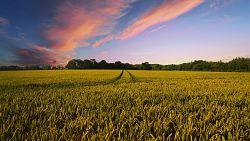

A first of it's kind analysis has found that despite the fact they are needed there the most, poorer urban areas in England are the least likely to have protected local green spaces.
CPRE, the countryside charity, has said that in order to "level up" local parks in urban areas, the parks need to be given the same protections as national parks.
At an average size of 1.8 hectares, important small local parks can be protected from development by applying to the council, so they can be designated as local green spaces (LGS). LGS are small parcels of land, close to where people live, and are demonstrably special to their community, for a variety of reasons. This can include their:
This neighbourhood planning tool is a unique power, because it implies being valued by the local people alone is a strong enough reason to protect the small patches of green space.
Since the designation was introduced in 2012, more than 6,500 LGS have been created across the country. However hardly any of these are in deprived, urban areas, and the majority are found in the wealthy parts of the South East.
The North has seen 5.9 LGS per 100,000 people, compared to 11.9 in the South East. Birmingham, Manchester and Liverpool are among cities that have no designated LGS at all. The predominantly rural local authority areas account for 55% of LGS designations, despite the fact that those who live there have a far greater access to nature than their urban counterparts. Only 38% of the 100 local councils with the most green space-deprived neighbourhoods have at least one designated LGS.
The CPRE report calls for the government to introduce compulsory standards for access to nature into both planning law and policy, and to add an indicator on access to nature to help facilitate easier access to nature for all.
The Chief Executive of CPRE, Cripsin Truman, said: "This is a solution to levelling up that has been hiding in plain sight; a planning superpower in the hands of ordinary people. All that people have to prove is they use and value the land for it to be eligible to be protected like it’s a national park".
"Unfortunately, there is a sliding scale of injustice when it comes to who is benefiting. Put simply, the poorer you are and the more nature-deprived your neighbourhood already is, the less likely you are to have any protected local green space. It’s time to address this imbalance and level up everyone’s access to nature".
"That is why we’re calling on the government to promise the equivalent of a national park for every neighbourhood. Local green space designation is a powerful way to protect vulnerable slices of nature, particularly in deprived areas. It has the added benefit of nurturing neighbourhood planning groups so that people get more of a say in what gets built locally"
"Our iconic national parks are rightly celebrated and protected. But research repeatedly shows they are not accessible to all – and that the poorest in society benefit the least. That’s why it should be a national priority to protect our local parks and green spaces so that everybody, no matter where they live, has access to the benefits of nature.".